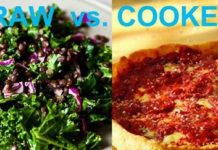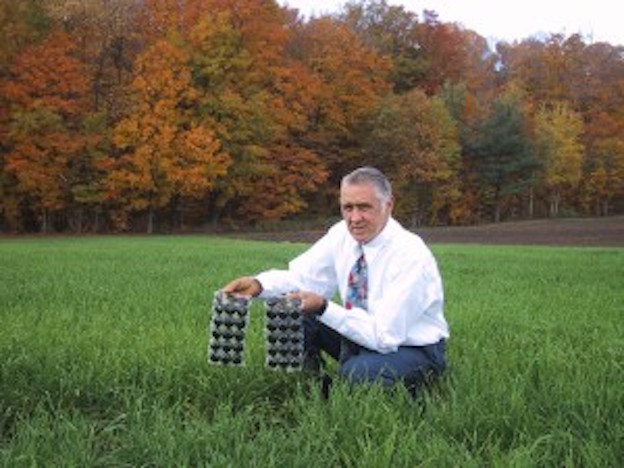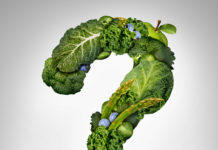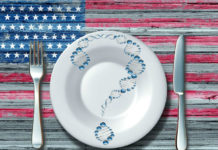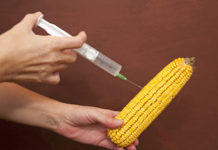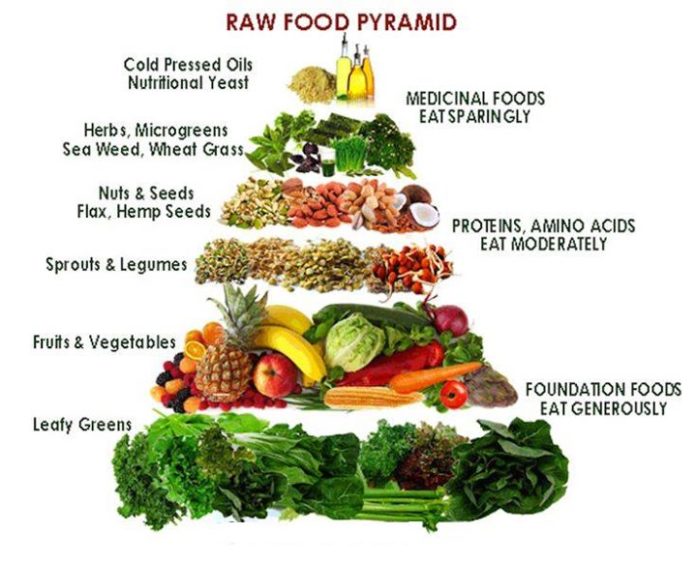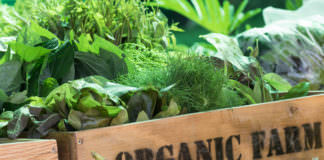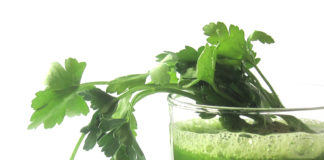Why Raw Food is Better than Cooked
Proponents of raw food benefits believe fresh, live food is much more nutritious than cooked. Cooking kills live enzymes in fresh food and destroys nutrients, creating toxic byproducts. So eating most of your food in its original raw, natural form is the most important part of a raw food lifestyle.
 Many people insist that we evolved eating cooked foods, but they’re just plain wrong! You see, early man started cooking about 350,000 years ago, but humanoids have been on the planet for 5 to 10 million years! The last 350,000 years were a drop in that bucket. What that means is that early humane ate plenty of fresh, raw fruits, vegetables, nuts and grains for millions of years before we even knew how to build fires.
Many people insist that we evolved eating cooked foods, but they’re just plain wrong! You see, early man started cooking about 350,000 years ago, but humanoids have been on the planet for 5 to 10 million years! The last 350,000 years were a drop in that bucket. What that means is that early humane ate plenty of fresh, raw fruits, vegetables, nuts and grains for millions of years before we even knew how to build fires.
Given that, it doesn’t make sense today to think we evolved to eat animals. That was a relatively recent adaptation for humans about 350,000 years ago when we learned to make fire. In fact, the average human back then died relatively young, around 25 years of age. About 43% of hunter-gatherer children never even reached their 15th birthday. Today, the child mortality rate in the United States is around 0.6%.
Living Longer isn’t the Only Measure of Our Health!
Today it’s more important to stay healthy into our 60s, 70s, 80s and beyond. Spending our elderly years hooked up to life-support machines and watching TV isn’t truly living. To enjoy a high quality of life as we get older we need to have a source of fuel for our cells that is both healthy and free from toxins that slowly build up in our bodies and eventually cause disease. Such toxins are mostly associated with eating processed foods and animal products for most of your life, though there are many diseases caused by everything from our air and water to our modern technology.
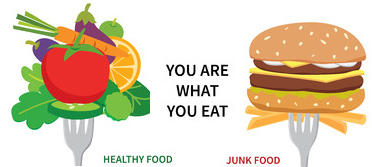 More than 90% of the food we eat today is processed, canned, and cooked. Such foods are usually denatured and chemically altered — regardless of how they may taste to you. So it’s no surprise we have an epidemic of chronic and degenerative disease — after all, you are what you eat. So many people now want to eat as much food as possible in it’s raw, unprocessed state, and usually or bio-dynamic and locally-grown foods.
More than 90% of the food we eat today is processed, canned, and cooked. Such foods are usually denatured and chemically altered — regardless of how they may taste to you. So it’s no surprise we have an epidemic of chronic and degenerative disease — after all, you are what you eat. So many people now want to eat as much food as possible in it’s raw, unprocessed state, and usually or bio-dynamic and locally-grown foods.
Now, even if you jumped through hoops to find the best possible, organic foods, they are compromised the minute you cook them. Cooking kills most of the nutrition. For example, when you cook proteins the molecules tend to fuse together or coagulate and are then mostly unavailable to your body. So now you have to consume a lot more protein than you’d otherwise need just to get enough that survived cooking.
These indigestible proteins don’t just evaporate or disappears, they stay in your digestive tract where they putrefy (i.e., rot) and feed the bad, anaerobic bacteria in your gut. The by-products of these anaerobic processes are highly carcinogenic. This happens microscopically in all cooked/heated protein molecules whether or not you can actually see it.
The more that a food actually needs to be cooked to be edible, the more it can eventually compromise your health. When a food “needs” to be cooked that’s the first sign that it’s not something you should eat! However, lots of things we cook don’t really need cooking at all and are much more nutritious when raw!
Cooking Denatures Food Molecules Past the Point of Bioactivity
Some scientists tell you that cooking and digestion are chemically identical. This is a huge oversimplification. There are two ways to denature proteins — chemically with enzymes or by heat with cooking. However, when you heat food your body can no longer use the heat-damaged amino acids — they’ll never be living, healthy protein molecules again.
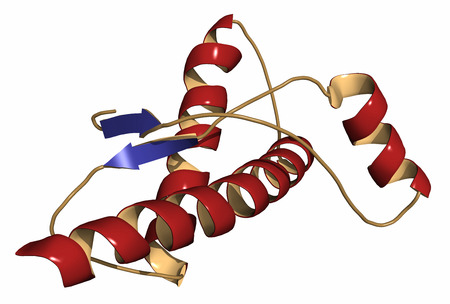
You see, the function of a protein is determined by its shape, which is determined by its structure, i.e., the sequence of its amino acids. The sequence is determined by the sequence of nucleotides in its genes (DNA). The function of a protein is dependent on this structure. A prion (protein+infection) is a misshapen protein molecule that became infectious when it lost it’s normal shape. Though proteins normally fold or bend, they can get bent out of shape from cooking or processing and become infections that can even cause a fatal disease.
A number of things can disrupt the structure of a protein (called denaturing):
- changes in pH (alters electrostatic interactions between charged amino acids)
- changes in salt concentration (alters electrostatic interactions)
- changes in temperature, usually from cooking or processing (higher temperatures reduce the strength of hydrogen bonds)
- presence of reducing agents (breaking the S-S bonds between amino acids)
Several researchers have discovered that prion’s deadly misshapen form is determined by exposure to low, acidic pH environments. In a healthy neutral or alkaline environment (such as from a raw food lifestyle) these proteins are just fine and properly shaped. But in low pH, acidic conditions, the proteins get more and more distorted until at some point they permanently lose their proper shape and are become Prions.
Your Body Is Like an Alkaline Battery — It Runs on Electrons
Life-giving chemical reactions in your body can only happen when electrons or energy flows between atoms. Cooking or processing causes everything you eat to lose electrons – the actual source of the life energy your body is hungry for. Healthy raw foods contribute electrons to your body, so are called alkalizing. Cooked and processed foods “steal” electrons from your body so are called acidic or “oxidizing” (to burn up, rust or decay).
Because the pH scale is logarithmic even a fraction of a point can create huge changes in your body’s health. In fact, your body’s most important processes can only work within a very narrow pH range. For example, if the pH of your blood falls to the low end of its normal range (~7.35-7.45), a .10 difference, it could reduce the oxygen levels in your blood by as much as 300%!
Rather than force people to be totally raw, I usually recommend that most people eat a diet that’s 75% raw food. If you count your snacks as one meal, that leaves 25% for cooked foods. Your body is easily able to eliminate the toxins you get from just 25% of your food, which means you can enjoy some cooked foods and still be pretty healthy. Remember, the most important thing you can do is to enjoy your food — so be as raw as you can and don’t get overly stressed out about all this!
Raw Food Benefits
- A mostly raw food diet enhances you energy levels while preventing nutritional deficiencies & improving your digestion.
- Fresh, live raw foods have been shown to significantly support weight loss and disease prevention — especially cardiovascular problems.
- A raw vegan diet can increase HDL (good cholesterol) & decrease LDL (“bad”) cholesterol levels.
- A raw food vegan diet has been shown to favorably effect on fecal microflora, associated with a healthy immune system & a reduced risk of cancer.
If you are suffering with arthritis, heart disease or any of the modern diseases associated with cooked foods, a raw food diet can significantly improve your total health and quality of life. All you have to do is know what are the best foods to eat raw … so here are some ideas to get you started.
The Eight Things You Should Always Eat Raw & Live!
Even though we often know which foods are good for us, we often ignore them for things we are used to — or even addicted to. They actually have the power top transform the way we feel and live if you just g ive them the chance. Stsrt with this list, incorporating these raw foods into your diet every day. Then, as your knowledge and understanding grows, your baby steps will turn into huge leaps! Of course, this is not a definitive list. There are many raw foods that can help transform your health and here’s but my top 7. Remember, these are always fresh, raw and organic. If you canb’t get organjic, at least get Non-GMO verified produce.
1. Fruits – There isn’t much research claiming that cooking has nay benefits for fruits. Eating berries, citrus fruits, melon and fruits their fresh, raw state is recommended for most people. Most people have been eating tons of glucose and fructose for decades, so they should probably take a break from too much fruits for awhile, until their diet stabilizes.
Regards tomatoes: just forget about cooking them! Cooking helps release more lycopene (an antioxidant) from tomatoes, but that only matters when you are eating a lot of cooked for. Raw foodists don’t need to worry as much about antioxidants — they’re in everything you eat raw!
2. Red peppers – You’ll get the highest amount of Vitamin C in the red variety of peppers, as well as several phytochemicals and carotenoids, particularly beta-carotene. The capsaicin in red peppers, which is what makes pepper “hot,” also supports weight loss, can speed up metabolism to reduce fat tissue and help tame your appetite
3. Onions – The high levels of allicin and quercetin in onions are known for their cancer-fighting and immune-boosting properties. Cooking, however, destroys these key nutrients and enzymes completely. I like to add raw onions to all my salads, “raw” soups and gluten-free sandwiches.
4. Garlic – Also high in allicin, I toss onions into just about everything I eat raw. I often add a chopped clove or two in my salads with olive oil and lemon juice for a simple dressing.
5. Coconuts – I drink gallons of coconut water, eat plenty of coconut meat and use a ton of coconut oil every day. The meat of a coconut is high in protein, iron, folate, fiber, potassium and more. It also helps to restore oxidative tissue damage and contains a source of healthy fats, proteins, and several vitamins and minerals. The rich medium-chain fatty acids in coconuts actually helps with metabolism and fat loss. Coconuts are anti-viral, anti-bacterial, anti-fungal, and anti-parasite, provides quick energy for physical and athletic performance, improves digestion and absorption of nutrients, protects the body from premature aging and degenerative disease, reduces risk of heart disease and improves good cholesterol (HDL), supports thyroid function, prevents wrinkles, provides sun protection and much more.
6. Broccoli – When raw, provides your body with sulforaphane — an anti-cancer compound that is less available to your body when cooked. This is also true for other cruciferous vegetables like cauliflower or kale. Cruciferous vegetables are a good source of dietary fiber, pantothenic acid, vitamin B6, vitamin E, manganese, phosphorus, choline, vitamin B1, vitamin A (in the form of carotenoids), potassium and copper. Broccoli is also a good source of vitamin B1, magnesium, omega-3 fatty acids, protein, zinc, calcium, iron, niacin and selenium.
7. Nuts & seeds
Acting as a great source of healthy fats, protein, and other key vitamins and minerals, regular consumption of raw nuts and seeds will most certainly support positive health. Some of the best options include, but are not limited to:
- Raw Macadamia Nuts – high amounts of manganese, vitamin B1, oleic acid (a healthy fatty acid) and magnesium.
- Walnuts – just 1/4 cup give you 100% of your daily recommended intake of plant-based omega-3 fatty acids. Also, when consuming walnuts fresh from the shell, don’t remove the white, almost waxy skin. It contains up to 90 percent of the nut’s antioxidants.
- Pumpkin seeds – High in zinc, known to promote healthy cell development and good for enhancing immune, thyroid and reproductive function.
- Almonds, hemp seeds, pistachios and Brazil nuts – Consume organic whenever possible — especially pistachios (unsalted, of course). These nuts often go through a bleaching or blanching process to remove the natural staining and/or “skin” on the outside of the nut Blanching is done by putting the nuts in very hot water for about a minute (blanching) then cooling them rapidly — basically cooking the nut.Besides, the husk adds some flavor and is packed full of nutrients.
8. Fresh Sprouts – Also high in allicin, I toss onions into just about everything I eat raw. I often add a chopped clove or two in my salads with olive oil and lemon juice for a simple dressing.
Also Read:



